


Blink blink !
Its almost here
.jpg&w=3840&q=50)
.jpg&w=750&q=50)
Fastest cars in India in 2025 under 20 Lakhs
- 1Six of 10 cars on this list are SUVs that can accelerate to 100 km/h
- 2Tata Nexon EV and MG ZS EV feature high up on this list
- 3Sub-₹20 lakh performance doesn't mean sacrificing fuel efficiency.
- 1. Hyundai i20 N Line | 0-100 kmph in 9.9 Seconds
- 2. Skoda Kushaq | 0-100 kmph in 9.6 Seconds
- 3. Mahindra XUV7OO | 0-100 kmph in 9.3 Seconds
- 4. Skoda Slavia | 0-100 kmph in 9.3 Seconds
- 5. Kia Seltos | 0-100 kmph in 9.2 Seconds
- 6. Volkswagen Virtus | 0-100 kmph in 9.2 Seconds
- 7. Tata Nexon EV | 0-100 kmph in 8.9 Seconds
- 8. Hyundai Verna | 0-100 kmph in 8.9 Seconds
- 9. Volkswagen Taigun | 0-100 kmph in 8.8 Seconds
- 10. MG ZS EV | 0-100 kmph in 8.5 Seconds
- Conclusion
We live in a time when speed is not necessarily mutually exclusive with an inflated price tag. The great thing about a rapidly-growing automotive sector like India is that we are getting access to cars that marry a healthy turn of speed with a number of other key requirements like efficiency, comfort, features, and practicality.
What this boils down to is the list you see on this page: the fastest cars under ₹20 lakh. As you’ll also notice, these cars are hardly one-trick ponies. They comfortably seat at least five people, come with a laundry list of safety and convenience features, and are well above average in terms of fuel efficiency.
We have narrowed our list of the fastest cars in India down to the models that achieve the quickest 0-100 kmph times. It should be well worth noting that every car on this list manages the 0-100 kmph sprint in under 10 seconds, which is impressive. It’s also interesting to see that there are quite a few SUVs that make this list. Usually known to be heavier (and consequently slower) than sedans and hatchbacks, the SUVs on this list serve to buck the trend. Lastly, it should come as no surprise that two electric vehicles (both SUVs) also feature here. EVs are known for their ability to deliver their torque instantly with no lag, and fully deserve their spot here.
| S. No. | Model | 0-100 kmph (claimed) | Top Speed | Body Type | Mileage/Range | Ex-Showroom Price (Delhi) |
| 1 | Hyundai i20 N Line | 9.9 Seconds | 160 kmph | Hatchback | 20 kmpl | ₹9.99 Lakh onwards |
| 2 | Skoda Kushaq | 9.6 Seconds | N/A | SUV | 18.09-19.76 kmpl | ₹18.98 Lakh onwards |
| 3 | Mahindra XUV7OO | 9.3 Seconds | N/A | SUV | 13-16 kmpl | ₹13.99 Lakh onwards |
| 4 | Skoda Slavia | 9.3 Seconds | N/A | Sedan | 18.73-20.32 kmpl | ₹10.69 Lakh onwards |
| 5 | Kia Seltos | 9.2 Seconds | N/A | SUV | 17-20.7 kmpl | ₹10.89 Lakh onwards |
| 6 | Volkswagen Virtus | 9.2 Seconds | 190 kmph | Sedan | 18.45-20.66 kmpl | ₹11.55 Lakh onwards |
| 7 | Tata Nexon EV | 8.9 Seconds | 150 kmph | SUV | 465 km | ₹14.49 Lakh onwards |
| 8 | Hyundai Verna | 8.9 Seconds | 210 kmph | Sedan | 18.6-20.6 kmpl | ₹11.00 Lakh onwards |
| 9 | Volkswagen Taigun | 8.8 Seconds | N/A | SUV | 18.15-19.87 kmpl | ₹11.69 Lakh onwards |
| 10 | MG ZS EV | 8.5 Seconds | 175 kmph | SUV | 461 km | ₹18.98 Lakh onwards |
1. Hyundai i20 N Line | 0-100 kmph in 9.9 Seconds

In case you missed it, the ‘N’ division is to Hyundai what AMG is to Mercedes-Benz, or what M is to BMW. In essence, ‘N’ is Hyundai’s in-house performance division that takes their standard road cars and gives them an extra turn of pace. Now, the N Line is half a step less than a full-blown ‘N’ car. Instead of heavy mechanical changes, an N Line package generally signifies primarily cosmetic updates. Seize the opportunity to own a second-hand Hyundai i20 N Line. This high-performance car offers both speed and value in a way that's hard to match.
The Hyundai i20 N Line, however, does benefit from a sportier suspension setup compared to the regular i20, which is aimed at giving it sharper steering responses and less body roll during cornering. Powering it is a 1.0-litre turbocharged petrol engine that makes 118 bhp and 172 Nm of torque, allowing it to sprint to 100 kmph in a claimed 9.9 seconds. The power is put down to the front wheels via a 6-speed manual or a 7-speed dual-clutch automatic. At its core, the i20 N Line comes across as a great option for those who want a halfway house: a slight performance boost, all the while retaining the i20’s core strengths of features, including cruise control, three drive modes, paddle shifters on the DCT-equipped versions, and many more.
Hyundai i20 N Line key specifications
| Engine | 998cc |
| Maximum Power | 118 bhp |
| Maximum Torque | 172 Nm |
| Transmission | 6-Speed Manual, 7-Speed DCT |
| Seating Capacity | 5 |
| Body Type | Hatchback |
Hyundai i20 N Line Key Features
- Cruise control
- Paddle shifters
- Three drive modes
2. Skoda Kushaq | 0-100 kmph in 9.6 Seconds

The Kushaq has been a turning point for Skoda in India. Since its launch in 2021, it has been known for its blend of performance and efficiency, and has given the Czech automaker a much-needed shot in the arm in terms of sales numbers. Grab the chance to drive a second-hand Skoda Kushaq. With impressive speed and an unbeatable price, this car is a top choice for speed enthusiasts.
It comes with two engine options. There’s a 1.0-litre TSI petrol engine that delivers 114 bhp and 178 Nm of torque. For the power-hungry lot, there’s also a 1.5-litre TSI, putting out 148 bhp and 250 Nm of torque. Naturally, it’s the bigger 1.5-litre TSI engine that manages to achieve the 0-100 kmph time of 9.6 seconds. Both engines pair with a 6-speed manual transmission, while 6- and 7-speed automatic options are available, too.
The reason a lot of buyers flock to the Skoda Kushaq is because it has a responsive motor, a well-tuned suspension, and appealing styling.
Skoda Kushaq key specifications
| Engine | 999cc petrol / 1,498cc petrol |
| Maximum Power | 114 bhp / 148 bhp |
| Maximum Torque | 178 Nm / 250 Nm |
| Transmission | 6-Speed Manual / 6-Speed Automatic / 7-Speed DCT |
| Seating Capacity | 5 |
| Body Type | SUV |
Skoda Kushaq key features
- Responsive touchscreen infotainment system
- Ventilated seats
- ESC as standard
3. Mahindra XUV7OO | 0-100 kmph in 9.3 Seconds

One look at the XUV7OO, and it’s easy to see that Mahindra’s aim with it was to create a one-size-fits-all SUV. From the base model to the top-spec AX 7 Luxury Pack, there’s a sizable ₹14.5 Lakh spread, encompassing no fewer than a whopping 67 variants. This includes 1.9-litre petrol and 2.2-litre diesel options, and 6-speed manual and 6-speed automatic transmission options, and a long feature list. Get behind the wheel of a used Mahindra XUV7OO, where fast performance meets great affordability.
Neither engine option will leave you wanting for more power, but it’s the turbo-petrol that’s the pick for those that want easy access to speed thanks to its 197 bhp and 380 Nm output. This allows the XUV7OO to sprint to 100 kmph in a brisk 9.3 seconds, which is not just impressive by itself, but especially in comparison to the likes of the Kushaq and i20 N Line that are slower to 100 kmph despite being lighter. The XUV’s 1,960-2,040kg kerb weight is significantly more compared to the Kushaq’s 1,193-1,248kg and the i20 N Line’s 1,220kg.
Mahindra XUV7OO key specifications
| Engine | 1,999cc petrol / 2,198cc diesel |
| Maximum Power | 197 bhp / 152 bhp |
| Maximum Torque | 380 Nm / 360 Nm |
| Transmission | 6-Speed Manual, 6-Speed Automatic |
| Seating Capacity | 7 |
| Body Type | SUV |
Mahindra XUV7OO key features
- Lane keep assist
- Sony sound system
- 2x 10.25-inch infotainment screens
- Panoramic sunroof
4. Skoda Slavia | 0-100 kmph in 9.3 Seconds

It wouldn’t be a stretch to say that the Skoda Slavia (and the closely-related Volkswagen Virtus) created a mini-revival of the sedan segment in India. At its core, the Slavia is a stylish mid-size sedan that packs a punch under its hood. Engine options include two turbocharged petrol units: an efficient 1.0-litre TSI that makes 114 bhp and 178 Nm of torque, and a more performance-oriented 1.5-litre TSI that puts out 148 bhp and 250 Nm of torque. Naturally, the 1.5-litre TSI gives the Slavia its competitive 0-100 kmph time of 9.3 seconds. Both engines get a 6-speed manual transmission option, and there’s also a 7-speed DSG on offer.
The Slavia has been known to provide drivers with a connected driving experience, all the while giving its occupants a comfortable ride on longer journeys. Take advantage of the chance to own a used Skoda Slavia. This speedster combines exhilarating performance with budget-friendly pricing.
Skoda Slavia key specifications
| Engine | 999cc petrol / 1,498cc petrol |
| Maximum Power | 113 bhp / 148 bhp |
| Maximum Torque | 178 Nm / 250 Nm |
| Transmission | 6-Speed Manual, 7-Speed DSG |
| Seating Capacity | 5 |
| Body Type | Sedan |
Skoda Slavia key features
- Digital driver’s display
- Ventilated front seats
- 10-inch infotainment system
5. Kia Seltos | 0-100 kmph in 9.2 Seconds

The Kia Seltos is a feature-packed compact SUV that has given its rivals in the mid-size SUV segment a lot to think about. The Korean brand’s game-plan has been to make the Seltos as appealing as possible to a wide range of customers. What this has translated to is two petrol engine options, a single diesel option, 6-speed manual and iMT gearbox choices, and even a 7-speed DCT automatic transmission. Oh, and a sizable 28 variants to pick from!
If speed is what you’re after, it’s well worth considering the 1.5-litre turbo-petrol option that puts out 158 bhp and 253 Nm of torque. On the road, that translates to a brisk 0-100 kmph time of 9.2 seconds.
Aside from that, the Kia Seltos is renowned for its premium and feature-rich cabin (including ADAS safety tech on certain trims), aggressive styling, and confidence-inspiring driving experience. Offering high-speed thrills at an affordable price, a used Kia Seltos is perfect for performance lovers.
Kia Seltos key specifications
| Engine | 1,497cc petrol / 1,482cc turbo-petrol / 1,493cc diesel |
| Maximum Power | 113 bhp / 158 bhp / 114 bhp |
| Maximum Torque | 144 Nm / 253 Nm / 250 Nm |
| Transmission | 6-Speed Manual, 6-Speed iMT, 7-Speed DCT |
| Seating Capacity | 5 |
| Body Type | SUV |
Kia Seltos key features
- Panoramic sunroof
- ADAS
- Head-up display
6. Volkswagen Virtus | 0-100 kmph in 9.2 Seconds

The Volkswagen Virtus and the Skoda Slavia are the same car underneath their impressively styled bodies. This explains why they both offer 1.0-litre turbo-petrol and 1.5-litre TSI engine options, and 6-speed manual and 7-speed DSG options.
Given that, it’s not a surprise to see that their 0-100 kmph times are separated by next-to-nothing (9.3 seconds for the Slavia vs. 9.2 seconds for the Virtus). The negligible difference comes mainly because of the Slavia’s 3 kg heavier kerb weight (1,275 kg for the Virtus vs 1,278 kg for the Slavia).
That said, the Virtus and Slavia have both cemented their reputation as being dependable, and reliable sedans that come packed with a number of features, enough practicality, and good efficiency. Here’s your chance to own a pre-owned Volkswagen Virtus. This car delivers incredible speed while still offering an unbeatable price tag.
Volkswagen Virtus key specifications
| Engine | 999cc petrol / 1,498cc petrol |
| Maximum Power | 113 bhp / 148 bhp |
| Maximum Torque | 178 Nm / 250 Nm |
| Transmission | 6-Speed Manual, 7-Speed DSG |
| Seating Capacity | 5 |
| Body Type | Sedan |
Volkswagen Virtus key features
- Cylinder deactivation tech on 1.5-litre petrol
- Ventilated seats
- Digital driver’s display
7. Tata Nexon EV | 0-100 kmph in 8.9 Seconds

Tata’s bet on providing electric mobility to the masses in India has certainly paid off so far. It launched the Nexon EV in 2020, and hasn’t looked back ever since. It even received a major update in 2023 that made it significantly more appealing as a budget electric vehicle purchase.
You can get the Nexon EV in a Middle Range (MR) option with a 30 kWh battery, offering a claimed range of 325 km. For longer journeys, the Long Range (LR) option features a 40.5 kWh battery and 143 bhp, extending the range to 465 km (claimed).
Since this is an electric vehicle, there is minimal lag in the power delivery, and the long-range Nexon EV with the bigger battery is naturally the one that’s able to crack 0-100 kmph in 8.9 seconds. Aside from that, there’s also regenerative braking that helps you regain energy while adding an extra layer of control.
Tata Nexon EV key specifications
| Battery Capacity | 30 kWh / 40.5 kWh |
| Maximum Power | 127 bhp / 143 bhp |
| Maximum Torque | 215 Nm |
| Transmission | 1-Speed |
| Seating Capacity | 5 |
| Body Type | SUV |
Tata Nexon EV key features
- V-2-L (Vehicle-2-Load) ability allows charging of electric appliances
- Adjustable brake energy regeneration via paddle shifters
- Interactive infotainment system includes games
8. Hyundai Verna | 0-100 kmph in 8.9 Seconds
.jpg)
If you’re in the market for a stylish and affordable sedan, it’s hard to give the Hyundai Verna a miss. Since its launch in 2006, the Verna has been through six generations, with Hyundai making each successive iteration a sizable improvement over the last. With speed and affordability seamlessly combined, a second-hand Hyundai Verna is the perfect blend of performance and affordability.
Today, the Hyundai Verna is seen as a comfortable, feature-packed, practical and efficient sedan that’s able to take on whatever its rivals throw its way. It’s not lacking in the performance department, either: you can pick between a 1.5-litre naturally aspirated motor that makes 113 bhp and 144 Nm, or settle for a more powerful 157 bhp and 253 Nm 1.5-litre turbo-petrol option. Transmission options include a 6-speed manual, iVT, and 7-speed dual-clutch automatic option. The turbo-petrol option is the one to get if you want to blitz the 0-100 kmph run in 8.9 seconds.
Hyundai Verna key specifications
| Engine | 1,497cc petrol / 1,482cc petrol |
| Maximum Power | 113 bhp / 157 bhp |
| Maximum Torque | 144 Nm / 253 Nm |
| Transmission | 6-Speed Manual, IVT, 7-Speed DCT |
| Seating Capacity | 5 |
| Body Type | Sedan |
Hyundai Verna key features
- Powered driver’s seat
- Heated and ventilated seats
- ADAS
- 8-speaker Bose sound system
9. Volkswagen Taigun | 0-100 kmph in 8.8 Seconds

If you’re looking for an upmarket version of the Skoda Kushaq, the Volkswagen Taigun may be a good bet. They both share some DNA, but they go about their execution quite differently. Combining high performance and a wallet-friendly price, a used Volkswagen Taigun is the perfect blend of power and savings.
The Taigun looks and feels more premium, and is even better equipped in terms of convenience and safety features compared to its Skoda sibling. The Taigun is equipped with premium features like wireless Android Auto and Apple CarPlay connectivity, ventilated seats, and a wireless phone charger, to name a few.
You can spec the Taigun in two ways: the first is with a 999cc petrol engine that makes 114 bhp and 178 Nm, while the 1,498cc turbo-petrol engine is the one to go for if you want more performance from your Taigun. The latter makes 148 bhp and 250 Nm, and does the 0-100 kmph run in a very impressive 8.8 seconds. Transmission options include a 6-speed manual, 6-speed automatic, and even a 7-speed DSG.
Volkswagen Taigun key specifications
| Engine | 999cc petrol / 1,498cc petrol |
| Maximum Power | 114 bhp / 148 bhp |
| Maximum Torque | 178 Nm / 250 Nm |
| Transmission | 6-Speed Manual, 6-Speed Automatic, 7-Speed DSG |
| Seating Capacity | 5 |
| Body Type | SUV |
Volkswagen Taigun key features
- 8-inch digital instrument cluster
- 10.25-inch touchscreen
- Wireless Android Auto and Apple CarPlay
- Ventilated seats
- Wireless phone charger
10. MG ZS EV | 0-100 kmph in 8.5 Seconds

MG made a splash with the ZS EV when it was launched in 2020. The all-electric SUV gave the British-Chinese manufacturer a strong footing among midsize SUVs thanks to its blend of performance, premium and feature-rich cabin, and appealing styling.
The ZS EV gets a 50.3 kWh battery pack that makes 174 bhp and 280 Nm, which helps the SUV get an impressive range of a claimed 461 km. Thanks to its power output, it can crack the 0-100 kmph in a very respectable 8.5 seconds, which just so happens to be the quickest car on this list.
Aside from that, the ZS EV has made a name for itself for being easy to drive, comfortable on longer journeys, and a great overall option for those looking at a more sustainable way of getting around.
MG ZS EV key specifications
| Battery Capacity | 50.3 kWh |
| Maximum Power | 174 bhp |
| Maximum Torque | 280 Nm |
| Transmission | 1-Speed |
| Seating Capacity | 5 |
| Body Type | SUV |
MG ZS EV key features
- Panoramic sunroof
- 360-degree camera
- 10.1-inch touchscreen
Conclusion
The Indian automotive sector is one that’s continuously evolving, as a result of which the buyer is the biggest winner. Testament to this fact is that ₹20 lakh of your hard-earned money today gets you a lot more value than it would have even five years ago.
Cars under ₹20 lakh today are not only quick, but also comfortable, practical, feature-rich, and efficient, as this list goes to show. What’s also abundantly clear is that speed is not the prerogative of low-slung, sleek sedans, as was the case not too long ago. Quick SUVs and hatchbacks have joined the fray, and are here to stay.
Frequently Asked Questions
Expand all

Blink blink !
Its almost here

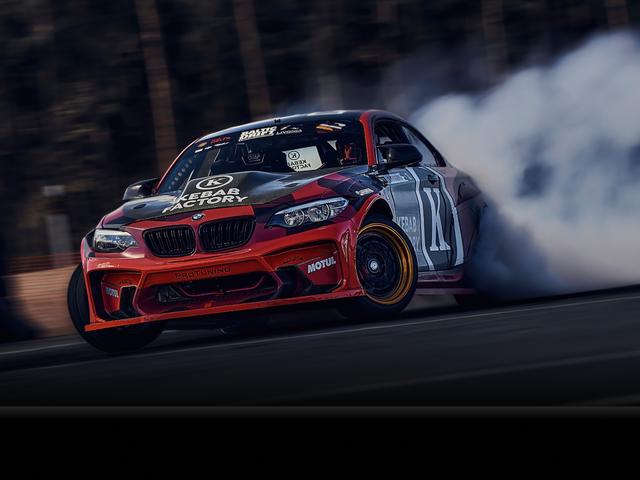

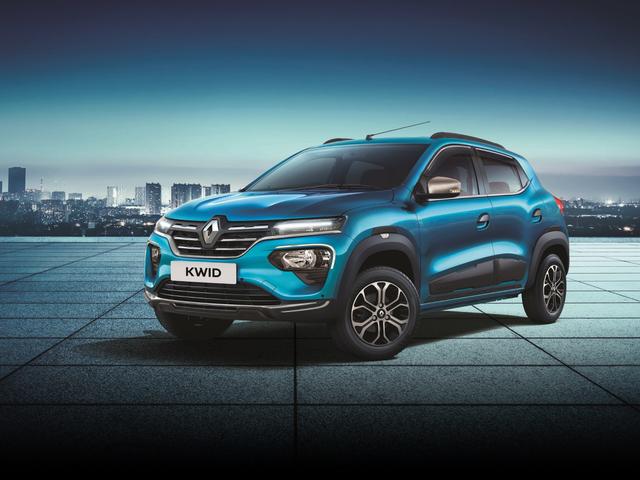





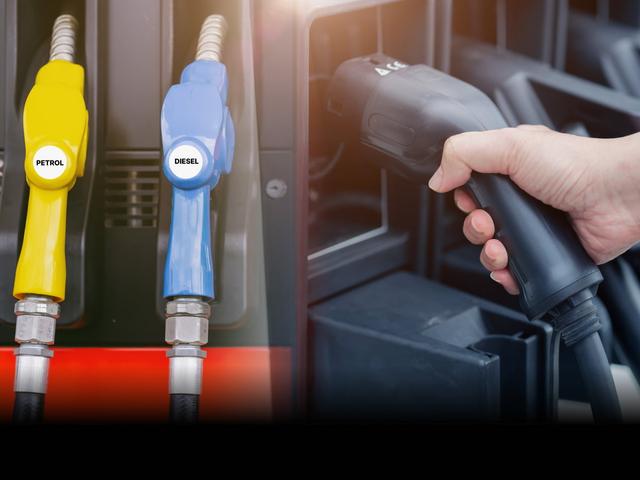

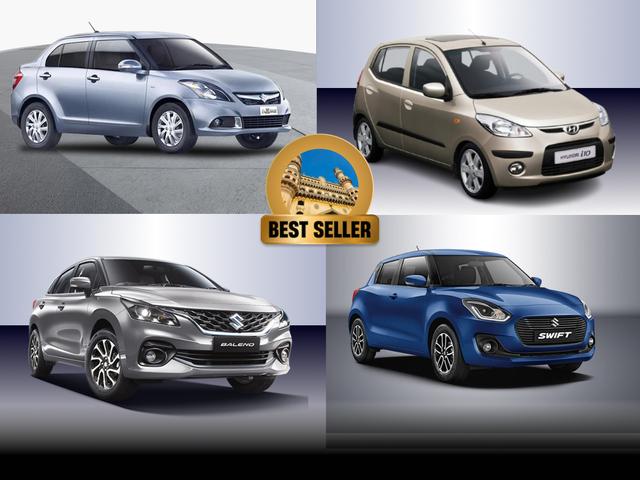

.jpg&w=640&q=75)

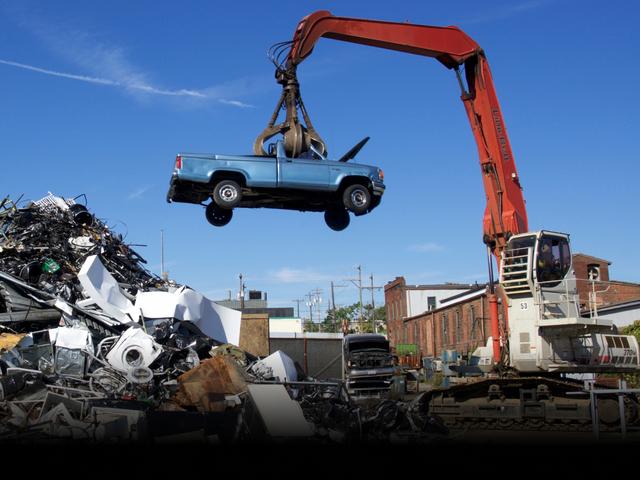

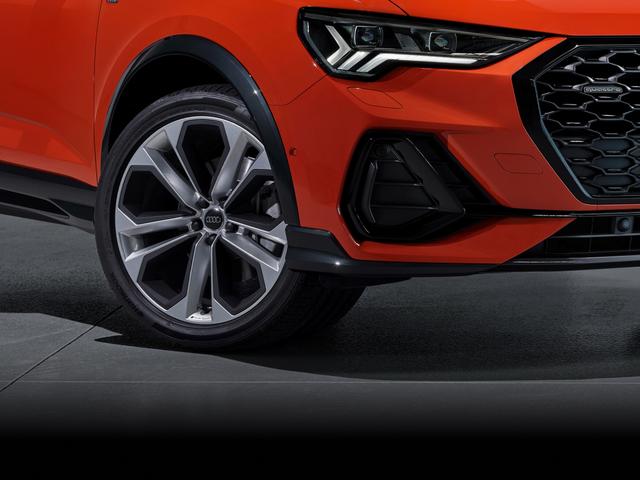





Blink blink !
Its almost here

.jpg&w=828&q=75)
-(1).jpg&w=828&q=75)








